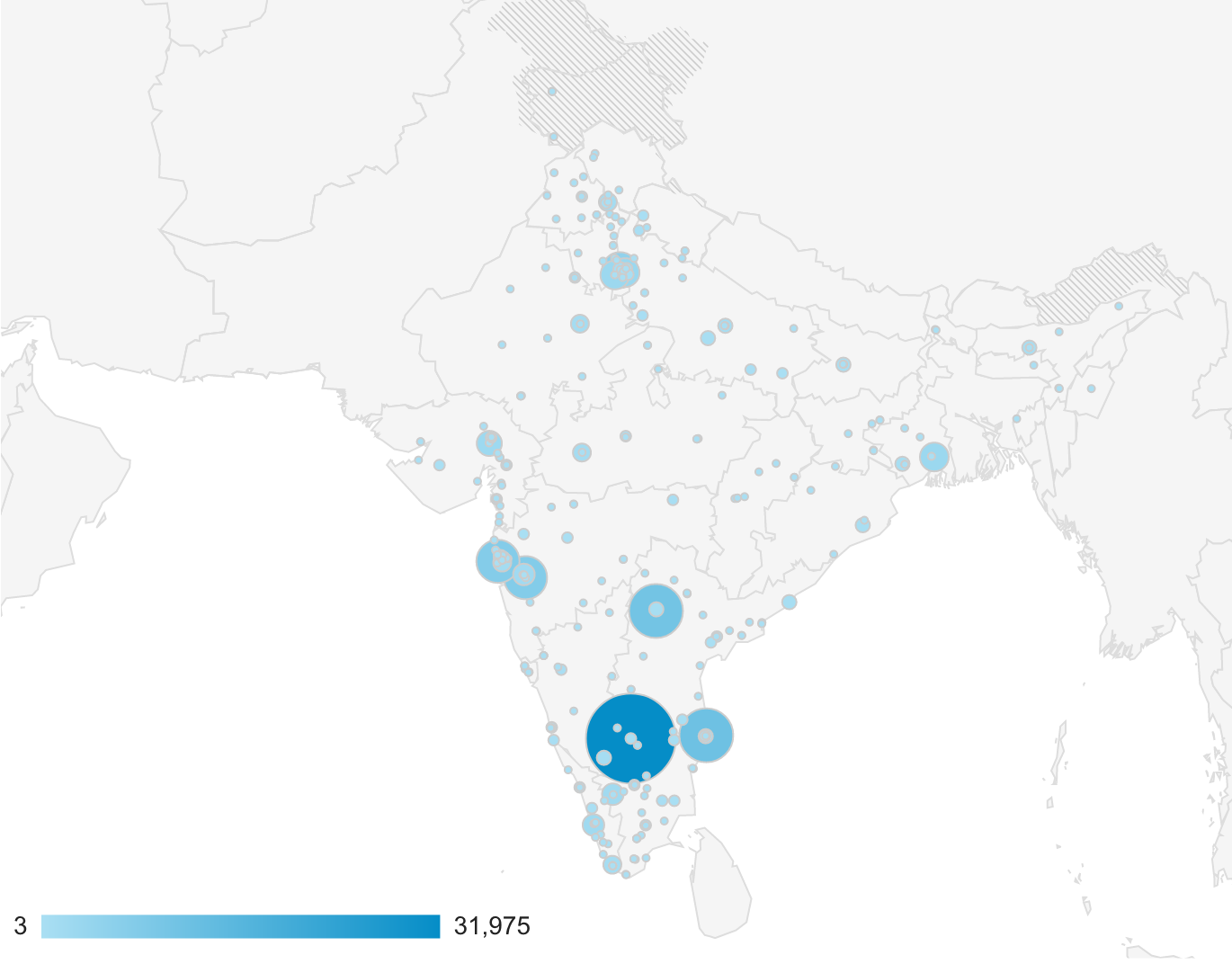 Traffic Report of Programming Historian visitors from India, 2012-2018.
Traffic Report of Programming Historian visitors from India, 2012-2018.
When the Programming Historian launched its open access tutorials in 2012, historians were the target audience. By 2014 our audience statistics had already presented a surprise: India had emerged as the second largest source of Programming Historian readers - a title it still holds in 2018.
| Country |
Visitors 2017 |
Per cent Increase from 2016 |
| United States |
100,853 |
219 |
| India |
43,906 |
276 |
| Great Britain |
24,688 |
252 |
| Canada |
11,575 |
215 |
| Germany |
11,645 |
225 |
While India is home to many talented historians, we suspect the project may have attracted a very welcome but unintended audience. The traffic is concentrated in four cities, topped by Bengaluru, India’s equivalent of Silicon Valley. In fact, four of the top ten cities in the world for Programming Historian traffic, are all in India:
| Top Ten Cities |
Traffic Volume 2017 |
| Bengaluru, India |
18,222 |
| London, UK |
13,113 |
| New York, USA |
12,102 |
| Chennai, India |
7,387 |
| Hyderabad, India |
5,997 |
| Toronto, Canada |
4,796 |
| Sydney, Australia |
4,447 |
| Pune, India |
4,297 |
| Chicago, USA |
4,006 |
Interest seems to be focused on the tutorials that provide Python programming skills (‘Counting Word Frequencies with Python’, ‘Working with Text Files in Python’, and ‘Creating and Viewing HTML Files with Python’) top the list, with a lot of interest also in ‘Introduction to Mobile Augmented Reality Development in Unity’ and ‘Building a static website with Jekyll and GitHub Pages’. This suggests two things: first, that a cohort of individuals in or around the Indian “tech industry” are using our lessons to develop their programming skills; and second, that open access Python tutorials fill a gap in the market.
Of course, these figures are modest: 18,222 readers per month from Bengaluru doesn’t make the Programming Historian the hottest ticket in town. But the traffic logs suggest a sustained use of our lessons by this demographic, which has both excited our project team and energised us to go beyond the stats. We want to know more about why and how people in India are using the project, and how we can better serve the needs of this group.
With that in mind, we’d love to hear from our readers in India about why and how they use the Programming Historian, from academics in India or scholars working on contemporary India (anthropologists, researchers in development studies) with ideas about what might be happening, and from comparable projects - such as our friends at Software Carpentry - with comparable stories to tell.
If you use the tutorials on the Programming Historian and live in India, please take a moment to fill in our survey about how we could better serve the needs of people like you: https://www.surveymonkey.co.uk/r/DQFBPKF
About the authors
Adam Crymble is Associate Professor of Digital Humanities at University College London.
James Baker is Professor of Digital Humanities at the University of Southampton.
